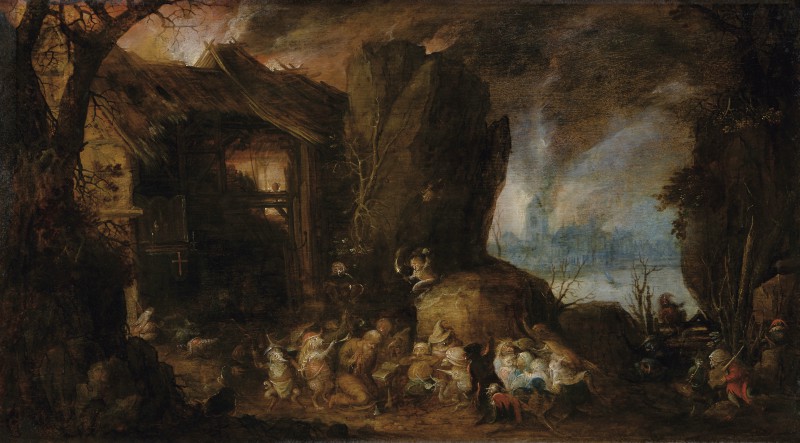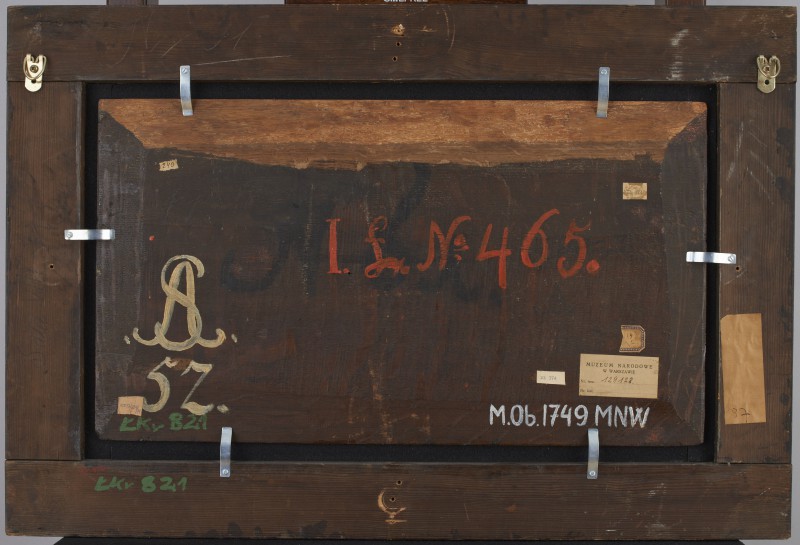The Temptation of St Anthony
- Date
- 16th/17th c.
- Object type
- painting
- Technique
- oil
- Material
- canvas
- Dimensions
- 33,0 x 59,2 cm
- Acquisition date
- 1776
- Location
- The Palace on the Isle - Picture Gallery, ground floor
- Place of Origin
- Belgium (Europe)
- Owner
- The Royal Łazienki
- Museum number
- ŁKr 821
The painting comes from the August Sułkowski gallery in Rydzyna, from where it came into the possession of the Stanisław August collection, probably before 1776 (see cat. no. 124).
... It is strongly inspired by Brueghel and borrows some typical motifs from the master; it is, however, different in character. The scene is set against the background of a large wooden building. Although the timber construction appears in Jan the Elder’s depictions of St Anthony, it has the form of a small hut with a roof held up by a characteristic forked trunk, framing the figure of the saint in a sort of baldachin ... . The wide opening up of one side of the composition onto the glow of a fire behind an expanse of water can be found in the artist’s infernal landscapes, but not those with the temptation of St Anthony. The figural scene is placed centrally, parallel to the picture plane and the landscape is somewhat simplified, built up of three, somewhat superficially defined plans–unlike in autograph paintings by the master–with the space gradually receding. The creatures gathered around the saint in the Łazienki painting—more creatures than monsters—have grotesque rather than demonic features. In this respect, they are close to the diabolical staffage in the earliest scene of the Temptation of St Anthony by Jan the Elder—the above-mentioned painting of c. 1594 in Kassel. There is no temptress in the Kassel picture—nor in that in the Łazienki.
The staffage in the Łazienki scene has the characteristics of Jan Brueghel the Elder’s ‘miniature’ manner of handling (thin brushstrokes), but it is deprived of the finesse of his autograph work. We believe that the painting was made in the master’s circle, probably in his workshop. ... . [See D. Juszczak, H. Małachowicz, The Stanisław August Collection of Paintings at the Royal Łazienki. Catalogue, Royal Łazienki Museum, Warsaw 2016, no. 25, pp. 121–123.]



